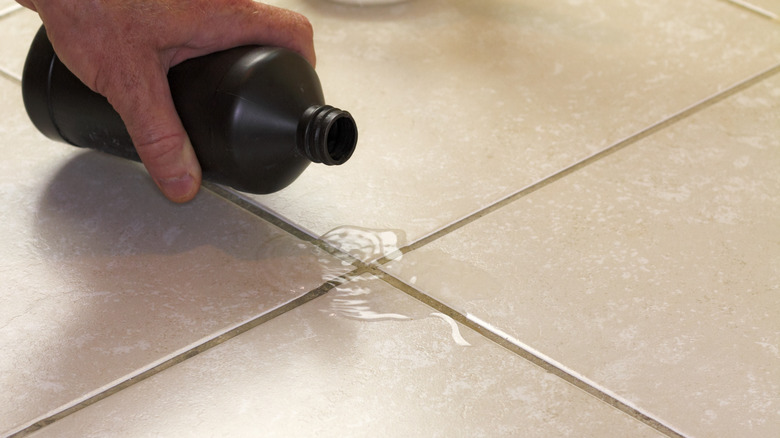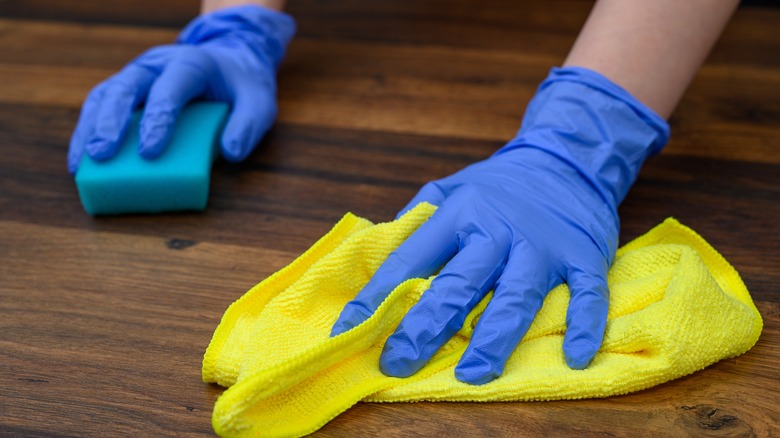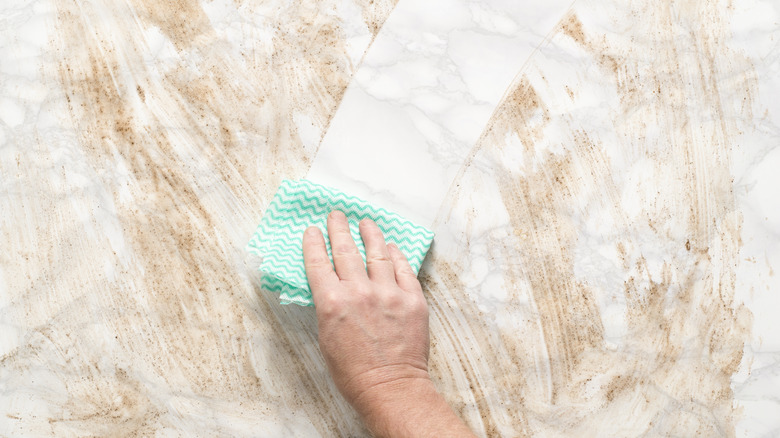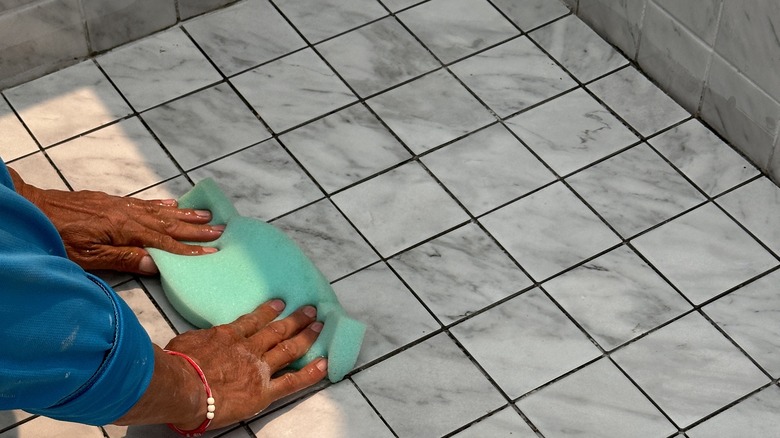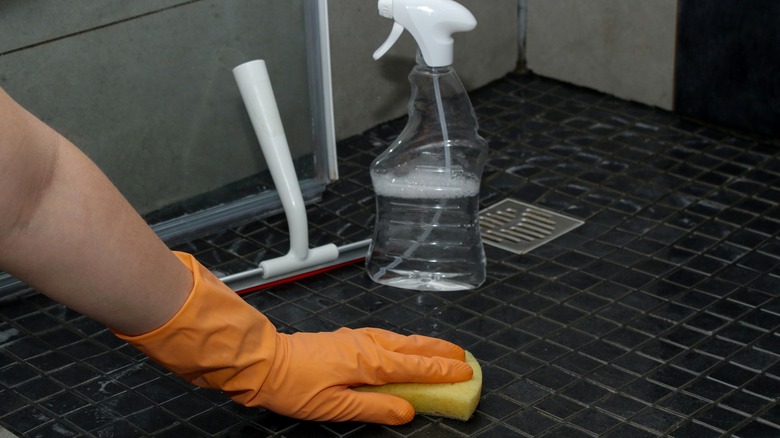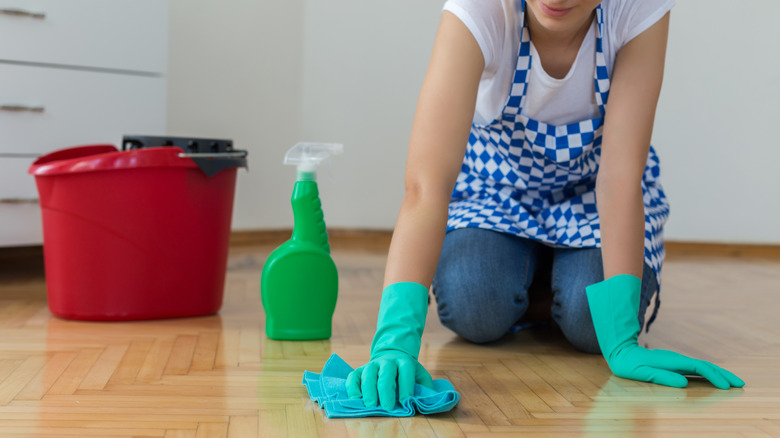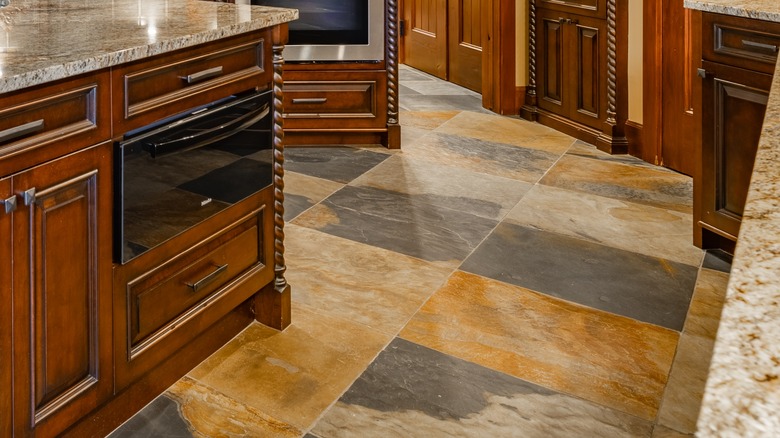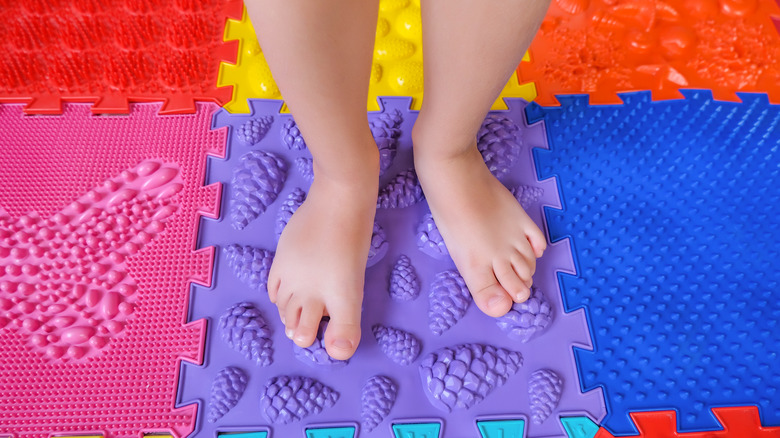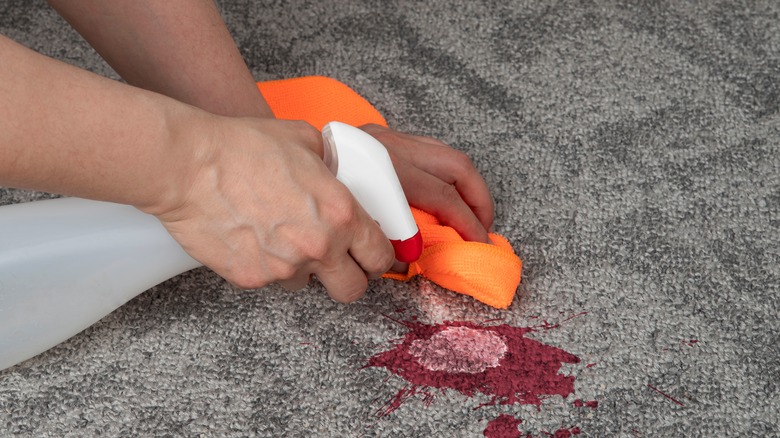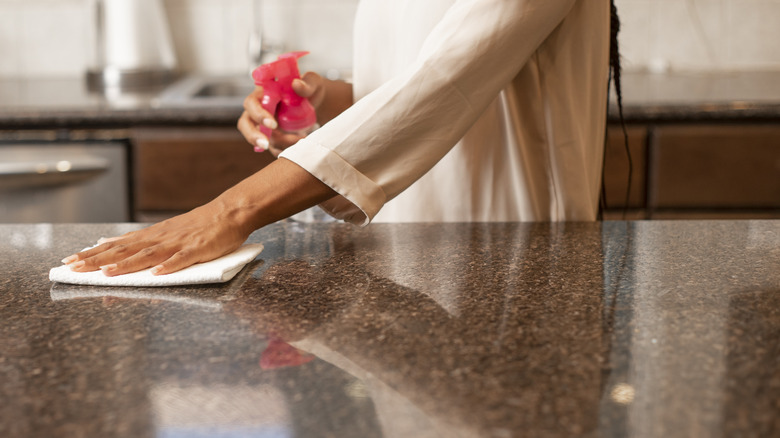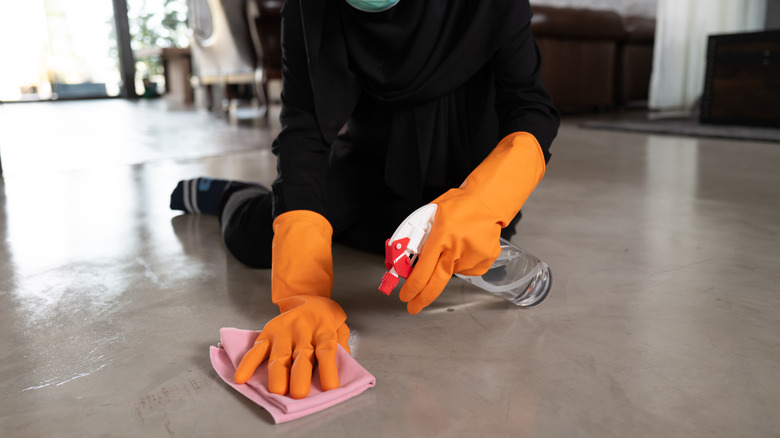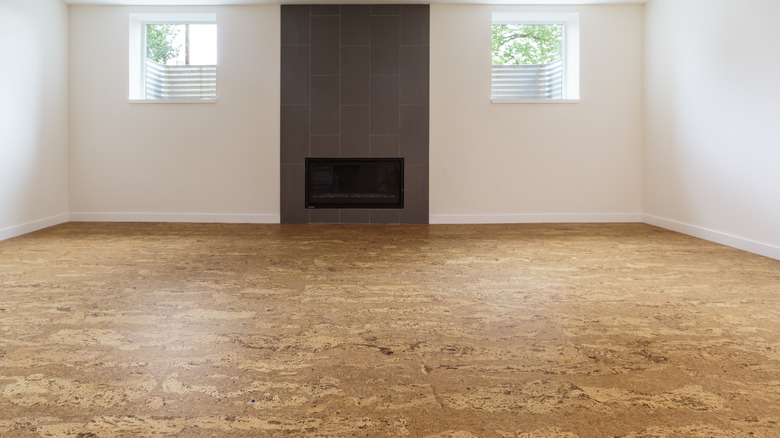7 Types Of Flooring You Can Clean With Hydrogen Peroxide & 4 To Avoid
If you aren't using hydrogen peroxide as a cleaner in your home, you are missing out big time. Hydrogen peroxide can tackle stubborn household stains as a cleaner, disinfectant, and oxidizer that can be used on many surfaces, like stained laundry, grimy shower walls, and yes, some types of flooring. But, even though it's natural, that doesn't necessarily mean hydrogen peroxide is super gentle. We found the types of flooring you can safely use hydrogen peroxide on, such as tiles and vinyl, and which ones to avoid, like marble and cork, so you can take advantage of this powerful, affordable cleaner without worrying about ruining your floors.
Before we get started, let's establish why you want to try cleaning floors with hydrogen peroxide. Hydrogen peroxide is typically sold in a 3% concentration, meaning 97% of the contents of your bottle are water — but this is still plenty to sanitize. Hydrogen peroxide is also a natural oxidizer, and a major component of color-safe bleach, so it can not just remove grime from surfaces, but actually help them to look brighter than ever. Another reason it's high on our list over, say, regular chlorine bleach, is that hydrogen peroxide can be safely mixed with a number of other natural cleaning products, so you can use it on its own or as a cleaning booster by mixing it with baking soda, water, salt, and much more.
1. Safe to use: most hardwood floors
Hardwood floors are known for being incredibly high maintenance, and you've probably heard endless lists of what not to use on them. Perhaps surprisingly, you can use hydrogen peroxide on wood flooring to clean and disinfect. However, hydrogen peroxide can cause color lightening on wood floors if a high concentration is used. On the plus side, this is great if you wanted your floors to appear lighter than they currently are, but you should avoid using highly concentrated hydrogen peroxide to avoid unwanted bleaching.
2. Avoid: marble floors
Marble is absolutely stunning, and on the very expensive side of flooring types. But its cost isn't the only reason you might not see it everywhere; it's also quite porous and soft, meaning that many chemicals will eat right through it. Hydrogen peroxide is one of the cleaners you should never use on marble floors, as it is acidic can remove the glossy finish and etch the marble, as well as leave behind spray marks and rings. The best method for cleaning your marble floors like a pro is nothing more than warm water and soap.
3. Safe to use: most tile floors
Hydrogen peroxide is a pretty heavy-duty oxidizing cleaner that can't be used on all flooring, but porcelain and ceramic tile can definitely handle it. That's great because tile and grout can get very dirty, especially if its in a kitchen and bathroom. Because porcelain and ceramic tiles are largely non-porous, the hydrogen peroxide will simply clean the muck off of the surface area without penetrating deeper. The hydrogen peroxide can even lighten white grout, but be cautious about applying it for too long or in too high of a concentration, as this can deteriorate the grout.
4. Avoid: tiles with intentionally colored grout
We love seeing grout in colors other than white, partially because it can create a striking contrast, but also because it won't have that same gray or yellow tint as it ages like white grout. That being said, you don't want to use hydrogen peroxide on tiled floors that are set with colored or black grout. Even though the ceramic and porcelain tiles will be totally fine, and the hydrogen peroxide can technically clean the grout, it may also bleach it, altering the color. This can cause uneven color and spottiness, or remove the pigment completely.
5. Safe to use: vinyl flooring
Vinyl flooring has come a long way, and is wonderful at replicating high-end looks of wood planks and other expensive materials for a fraction of the cost, but it's also highly durable, so you can safely use hydrogen peroxide to clean your vinyl floors. Hydrogen peroxide can also be safely mixed with other vinyl-friendly household staple cleaners, such as baking soda, to deliver a powerful clean. Just add equal parts hydrogen peroxide and water to your mop bucket and get to work. You can also use 3% hydrogen peroxide alone to spot clean and remove stains.
6. Safe to use: slate floors
Slate floors are beloved because they have all of the natural texture and color gradation of other natural stones, but are much less porous than other varieties, such as marble. That's why, despite the fact that slate is a natural stone derived from metamorphic rock, meaning it absorbs liquids and other substances, it can be spot cleaned with diluted hydrogen peroxide to remove stains. In a spray bottle, mix water and hydrogen peroxide in a 1:1 ratio, spray the stain, and allow it to sit for 10 minutes, then scrub the stain and rinse it thoroughly.
7. Avoid: rubber flooring
Rubber flooring isn't incredibly common in most rooms, but it certainly serves its purpose in gyms or children's play rooms. It's very elastic and durable, but it doesn't do well up against hydrogen peroxide as an acid. Strong acids can deteriorate rubber over time, causing it to lose its elasticity and become brittle, leaving it vulnerable to cracking and crumbling. Although hydrogen peroxide is a weak acid with a pH of about 4.5, it can still break down rubber, so we recommend using a pH neutral, mild detergent to successfully clean rubber flooring instead.
8. Safe to use: carpeted floors
Although you probably won't want to douse your carpet in hydrogen peroxide, it is an amazing spot cleaner for carpeted flooring. Hydrogen peroxide is one of the main components in color-safe bleach for fabrics, so it's definitely safe on carpet fibers. You can spritz a bit of hydrogen peroxide on the stain, such as blood, wine, or coffee. Hydrogen peroxide does take a while to evaporate, so once it's applied, gently blot at it with a damp rag. If the stain doesn't lift fully, reapply the hydrogen peroxide and repeat the process as needed, careful not to over-saturate the area.
9. Safe to use: sealed granite
Granite is much harder and less porous than some other natural stones, such as marble, which makes it safe to use hydrogen peroxide on. However, just be sure not to use too high a concentrate of hydrogen peroxide or reapply it too often, as this can cause discoloration and deterioration of the granite. Hydrogen peroxide is best used as an occasional spot cleaner and stain remover for granite, rather than an all-over cleaning solution. For that, reach for a granite cleaner, or stick to regular mild soap and water.
10. Safe to use: concrete
Concrete is an incredibly versatile flooring material, and it can be used indoors as well as outdoors. But it is also susceptible to staining, as well as mold and mildew, especially when installed outside. Luckily, hydrogen peroxide is perfect for cleaning concrete! Simply mix the hydrogen peroxide with warm water, then spray it on the flooring, or add it to your mop bucket and scrub away. Hydrogen peroxide can be applied pretty liberally to concrete or lift discoloration and staining.
11. Avoid: cork floors
Although it isn't super common yet, cork is an eco-friendly flooring option, as well as durable and affordable. But you may not have much experience cleaning it, because we most often find cork at the end of a wine bottle. Instead of hydrogen peroxide, remove stains from cork flooring with soap and water, or even white vinegar. That's because hydrogen peroxide can cause bleaching, while mild detergents or even vinegar do a great job of cleaning and stain removing without lightening the color of the floor.
